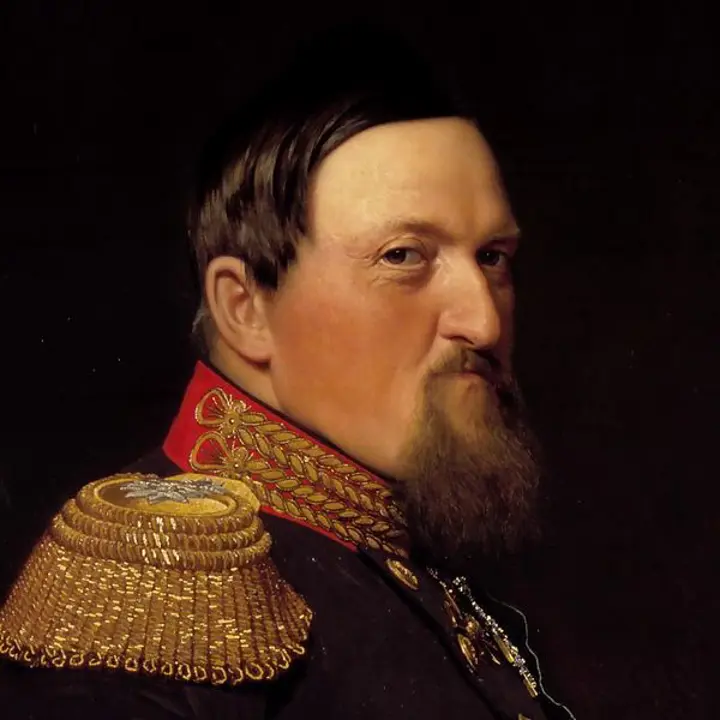
Frederik VII
When Frederik VII died without leaving an heir, Christian IX was chosen as his successor.

It was not in the cards for Prince Christian (IX) of Schleswig-Holstein to become king of Denmark. But since his predecessor, Frederik VII, had not produced an heir, Christian IX acceded to the throne in 1863 as the first king of the House of Glücksborg.
The House of Oldenborg was at risk of dying out
Frederik VII did not leave an heir, and thus, it seemed that the male line of the House of Oldenborg, which had been on the Danish throne since 1448, could die out. During the King's final years, finding a successor was therefore a task of the utmost significance. Even though there were options that seemed more obvious from a the perspective of heredity, the choice ultimately fell on Prince Christian of Schleswig-Holstein.
After the untimely death of Christian's father, in 1831, he completed his officer's training in Copenhagen under the guardianship of his mother's sister and her husband – Queen Marie and Frederik VI. In 1842, he took an important step towards the throne when he married Princess Louise of Hessen-Kassel. Through the Princess's mother, the Danish Princess Charlotte, the newly-weds had a hereditary claim to the throne, while Christian had a hereditary claim on the Duchies of Schleswig and Holstein. Another point in his favour was his participation in the First Schleswig War, in 1848-50, on the Danish side, and his support for the United Monarchy: a Danish realm that included the Kingdom of Denmark and the Duchies of Schleswig, Holstein and Lauenburg. With the London Treaty of 1852, it was decided that after the death of Frederik VII, the Glücksborg line would inherit the Dansh throne.
The proclamation on Christiansborg Castle Square
On 15 November 1863, Christian IX was proclaimed King of Denmark. A large crowd had assembled under the balcony of Christiansborg Palace to meet their new monarch. We might almost imagine how the loss of Frederik VII must have felt to many of the Danes in the crowd. They had lost the king who had given part of the general population a say in matters of government. Thus, the mood must have been sad and uneasy. When Christian IX stepped onto the balcony, he met a people who did not know him and whose trust he would need to earn.
Europe's parents-in-law
Christian IX and Queen Louise had six children, and this royal couple eventually became known as 'Europe's parents-in-law'. Queen Louise's efforts were key in earning the couple this nickname, as she toured Europe in order to build alliances with her children. In 1863, their daughter Princess Alexandra married the Prince of Wales (the later Edward VII of the United Kingdom). In 1866, their daughter Princess Dagmar married the heir to the Russian throne (the later Alexandr III of Russia). And in 1863, their son Prince Vilhelm had been proclaimed King of Greece, under the name George I. Thus, with the eldest son, the later Frederik VIII of Denmark, four of their children reign over European nations.
Growing popular support
Christian IX's reign was marked by the defeat on the battlefield in 1864, when the Danish realm lost the Duchies to Prussia and Austria. With his German background and heavy German accent, Christian IX was not popular in the budding Danish nation-state during the initial years of his reigh. However, during his long reign, this changed. It helped a lot that the children's advantageous marriages lent lustre to Denmark after the defeat and loss of territory. Christian IX was conservatively minded, and for many years, he stood as the guarantor that the Conservative Party would remain in power. During the so-called provisional period, from the 1870s to 1894, the King's support enabled the Conservative Party to govern while bypassing Rigsdagen, the Lower House.